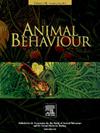有羽毛的鼻子:理解鸟类嗅觉和觅食的方法论见解
IF 2.3
2区 生物学
Q2 BEHAVIORAL SCIENCES
引用次数: 0
摘要
鸟类嗅觉能力的研究由于其复杂性和方法上的困难,迄今为止受到的关注相对有限。为了解决鸟类嗅觉研究的挑战,我们通过搜索Web of Science和b谷歌Scholar数据库中的出版物,筛选了40年来的文献。本文通过对80项鸟类嗅觉觅食实验的分析,指出了鸟类嗅觉觅食研究中存在的显著偏差,并强调了鸟类分类群、地理区域和方法方法上的差距。虽然人们对海鸟对二甲基硫化物(DMS)或食虫鸟类对草食诱导的植物挥发物(HIPVs)的反应给予了很大的关注,但对果食性或食性鸟类的嗅觉反应的研究仍然不足。在温带地区研究的优势进一步限制了我们对鸟类物种丰富的热带地区鸟类嗅觉的理解。鸟类嗅觉行为的一般特征的检测是困难的,特别是因为不同的方法方法和缺乏鸟类和气味特征的详细信息。未来的研究应该区分先天和习得的嗅觉行为,解决环境噪音的影响,并考虑个体和性别对挥发性化合物的反应差异。加强对这些方面的研究将提高和加深我们对鸟类嗅觉觅食行为的认识,并为有针对性的害虫管理和水果传播策略提供生态应用。本文章由计算机程序翻译,如有差异,请以英文原文为准。
Feathered noses: methodological insights into understanding avian olfaction and foraging
Research into avian olfactory abilities has so far attracted relatively limited attention due to their complex nature and methodological difficulties. To address the challenges of avian olfactory research, we screened literature spanning four decades by searching publications in the Web of Science and Google Scholar databases. Based on the analyses of 80 experiments that focused on the foraging behaviour of birds, we highlight significant biases in the study of avian olfactory foraging, emphasizing gaps in bird taxa, geographical regions and methodological approaches. While much attention has been paid to the responses of seabirds to dimethyl sulphide (DMS) or of insectivorous birds to herbivore-induced plant volatiles (HIPVs), olfactory responses of frugivorous or nectarivorous birds remain underexplored. The predominance of studies in temperate regions further limits our understanding of bird olfaction in bird species-rich tropical areas. The detection of general traits of bird olfactory behaviour is difficult especially because of varying methodological approaches and lack of detailed information on bird and odour characteristics. Future research should distinguish between innate and learned olfactory behaviours, address the impact of environmental noise and consider individual and sex-specific differences in response to volatile compounds. Intensifying the consideration of these aspects will improve and deepen our knowledge of bird olfactory foraging behaviour and allow for ecological applications for targeted pest management and fruit dispersal strategies.
求助全文
通过发布文献求助,成功后即可免费获取论文全文。
去求助
来源期刊

Animal Behaviour
生物-动物学
CiteScore
4.60
自引率
8.00%
发文量
236
审稿时长
10.2 weeks
期刊介绍:
Growing interest in behavioural biology and the international reputation of Animal Behaviour prompted an expansion to monthly publication in 1989. Animal Behaviour continues to be the journal of choice for biologists, ethologists, psychologists, physiologists, and veterinarians with an interest in the subject.
 求助内容:
求助内容: 应助结果提醒方式:
应助结果提醒方式:


